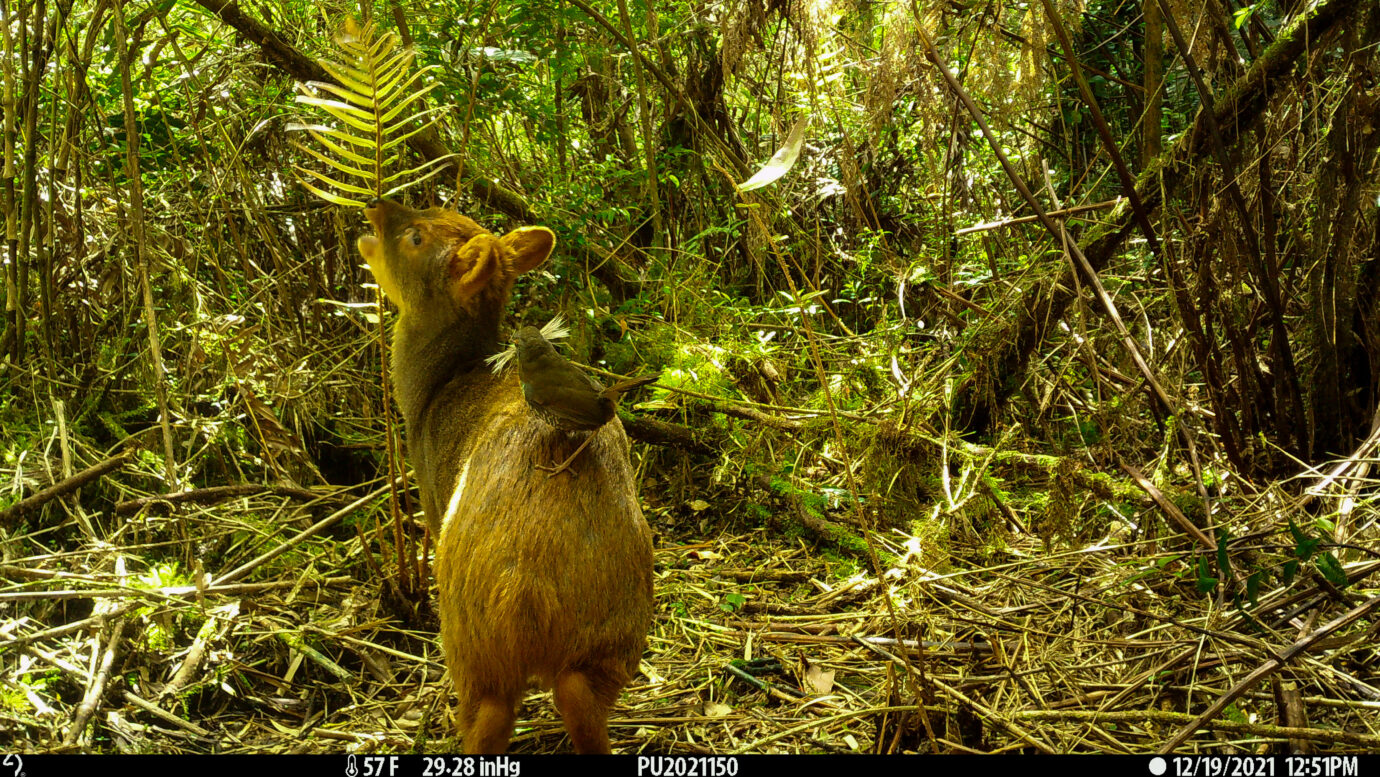
The surprising relationship between a chucao and a pudú in the heart of chilean Patagonia
This finding reveals a rarely documented interaction between species, providing insight into possible adaptive strategies of birds in cold climates.

In a finding that sheds light on an unknown aspect of the interaction between native species in the ecosystems of southern Chile, the Rewilding Chile Foundation, in collaboration with Panthera, CONAF and the University of Chile, has documented through camera traps a rare behavior: a chucao (Scelorchilus rubecula) removing hairs from a pudú (Pudu puda) to possibly build its nest. This study, entitled “A chucao plucking the hair of a southern pudu, Pudu puda (Molina, 1782), in the Chilean temperate forest,” which describes this behavior known as kleptotrichia, in which birds extract hair directly from living mammals to build their nests, an extremely rare and rarely documented phenomenon in the scientific literature.
“While the use of mammal hair in nest construction is a known and documented phenomenon among birds, with birds generally collecting hairs that get caught on branches, thorns or even on the ground, the fact that a chucao repeatedly pecks and obtains hair directly from a live animal, as was observed on this occasion, represents an almost unprecedented variant of this behavior,” says Cristián Estades, from the Wildlife Ecology Laboratory of the University of Chile.
The team of researchers, composed of Fundación Rewilding Chile and collaborators from the University of Chile and the Panthera organization, suggests that this behavior could be an adaptive strategy of the chucao to improve the quality of its nest, optimizing thermal insulation in the cold and humid temperate forests of southern Chile. This behavior was recorded in December 2021 in Pumalín Douglas Tompkins National Park, in the framework of a camera trap sampling in the area. A total of 156 images were obtained in which the chucao repeatedly perches on the pudú’s back to extract hair for about three minutes, during a period of the year that coincides with both the breeding season of the bird and the seasonal molting of the pudú’s fur.
This finding opens new questions about how birds adapt their survival strategies in challenging environments. The increasing availability and use of camera traps contributes to expanding our understanding of the natural history of wildlife in remote, pristine, and little-known areas such as in this case in Pumalín Douglas Tompkins National Park.
“By analyzing the images we can conclude that the pudú showed no signs of discomfort in the face of the chucao’s behavior, which raises the possibility that the interaction offers some indirect benefit. We could speculate that the removal of the loose hair might relieve the pudu, similar to how some deer experience relief from shedding old fur. Another possibility is that the pudú tolerates the presence of the chucao by confusing hair collection with parasite removal or another mutualistic interaction where both species could be benefiting,” explained Cristián Saucedo, Director of wildlife programs at Fundación Rewilding Chile.